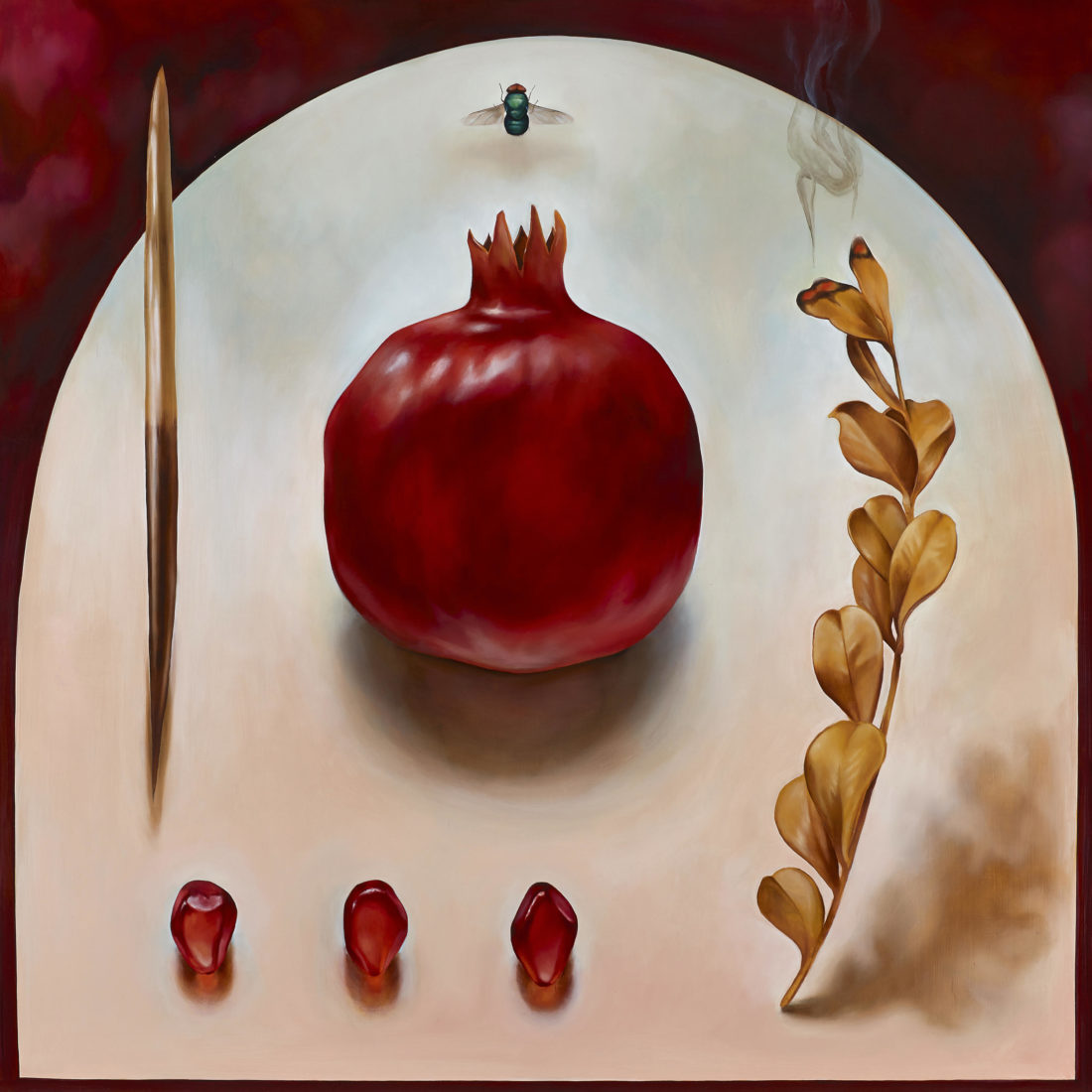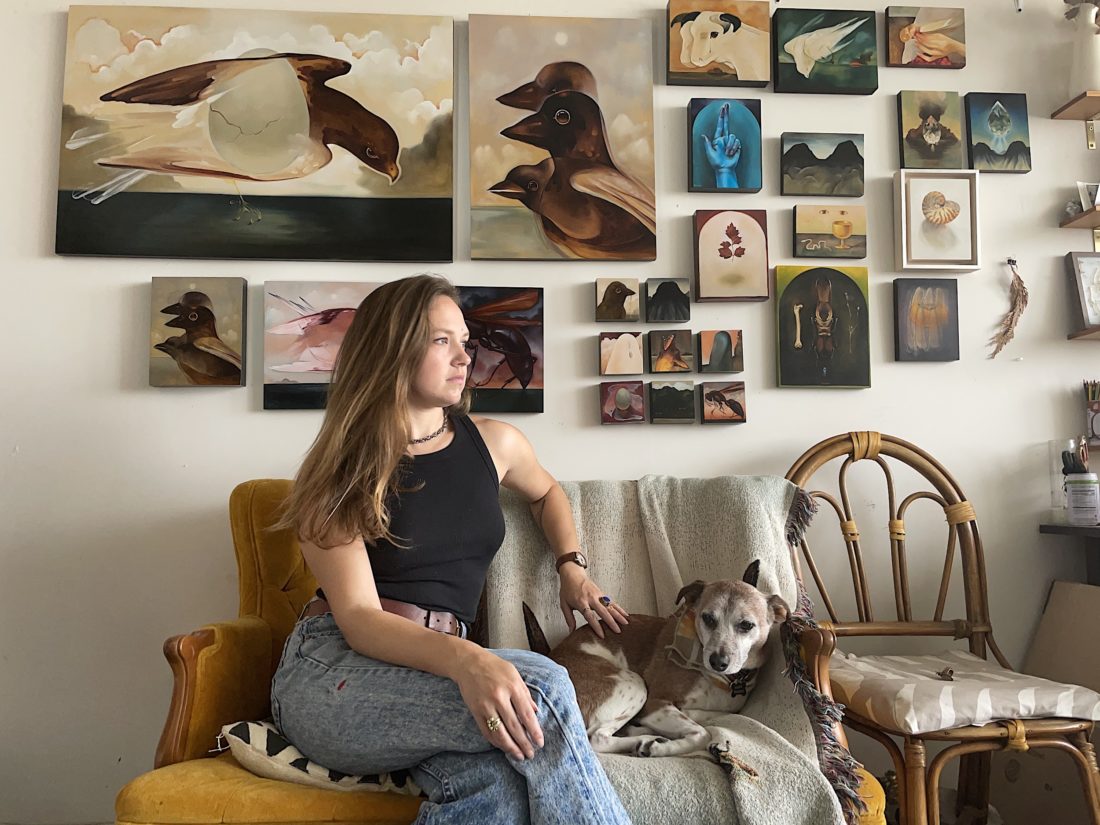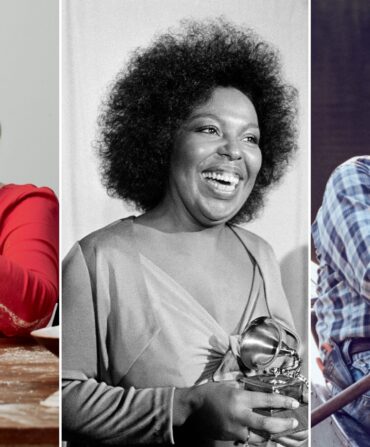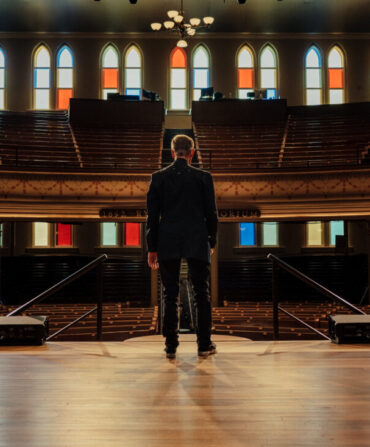In 2019, the artist Ida Floreak visited my college painting class, and the tiny treasures she brought in fascinated me. For her compositions, she carefully arranged glistening pieces of quartz, tiny animal bones, cracked eggs, and delicate insect shells. She gathers items during walks and paints them on wood panels, some of which will make their way into her upcoming group show, Force of Nature, April 21 to June 6 at the Claire Elizabeth Gallery in New Orleans. “I’m always collecting things,” Floreak says. “A critical part of my process is always keeping my eyes open, staying receptive to whatever might cross my path and be the next source of inspiration.”
Floreak’s technique is both precise—as in the detail she shows in a great black wasp’s jointed legs—and seemingly effortless, as in the organic shape of a robin’s egg (outlining an egg form is way harder than it looks). Her meticulous approach to painting reflects her intense scientific illustration studies at the Rhode Island School of Design. But her rendition of flora and fauna is otherworldly. Her paintings—glowing panels surrounded by magical still lives of thorny branches, dried flowers, and animal skulls—are shrines to nature, harking back to triptych reliquaries from Italian Renaissance and Medieval artists. In a time of ecological distress, painting with a sacred reverence for the environment has helped lessen Floreak’s anxiety. “Earlier in my career, I was almost trying to catalog things as if they weren’t going to be here anymore,” she says. “I’ve shifted my perspective away from doom to a mindset of abundance.”
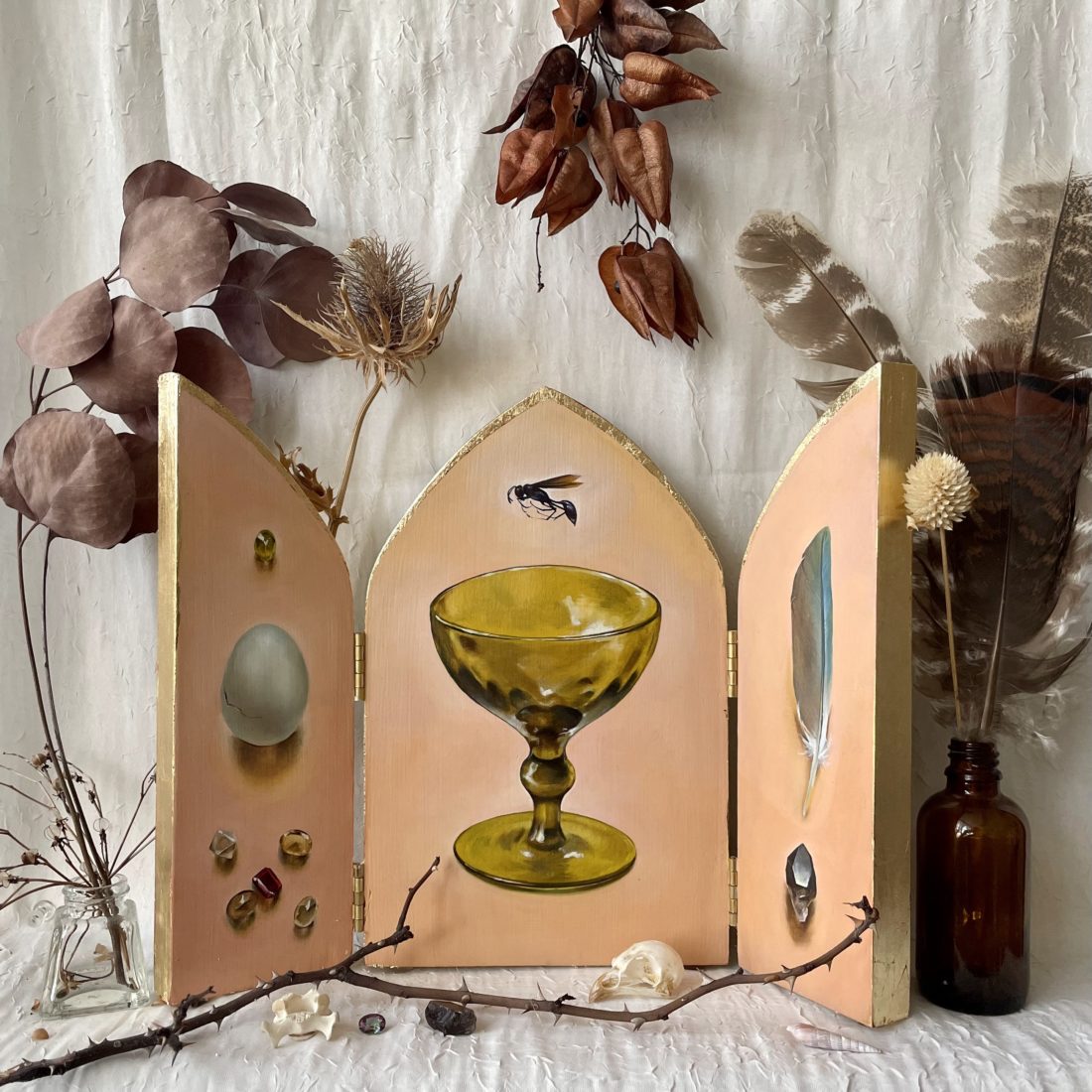
Her pieces for Force of Nature take cues from Italian painters focused on religious storytelling, such as the Early Renaissance artist Fra Angelico. “There’s such a softness and peace in his compositions and color palettes, they feel eternal,” Floreak says. Her series also draws from the Italian painter Caravaggio. “He’s on the other end of the spectrum of Fra Angelico, all darkness, drama, and pathos. I’ve been trying to take those two influences and work with them simultaneously.”
We asked Floreak more about living and painting in New Orleans, her creative process, and the evolution of her artwork for Force of Nature.

How has living in New Orleans influenced your work?
I’ve been in New Orleans for eleven years. There’s a magic here that exists in few other places, a breaking down of the barriers between the material and spirit realms. More than anywhere else I’ve been, there’s a sense of community and an understanding of the importance of that to our well-being. When we come together and make music and dance, we can stay in touch with what we’re here for.
From a natural perspective, the cycles of life are much more dramatic here than in New England where I grew up, so I’m constantly facing the relationship between growth and decay. The ground is soft and flat and always churning with life. I think a lot about the ways landscapes and environment alter the way we see the world. Does where we live have an effect on our psyches, on our sense of self? I’m sure being in the swamp has changed my perspective.
What’s your painting process like?
Once I make a piece, it’s intuitive—I usually find one or two things that I want to be the main focus or in conversation with each other. I try to never be too attached to an object or narrative; I have to be open to the composition telling me what it needs. If I set out to paint a beetle, I might get most of the way through the composition process and realize the other items I’ve pulled are working in harmony without it, and I have to set the beetle aside for a future painting.
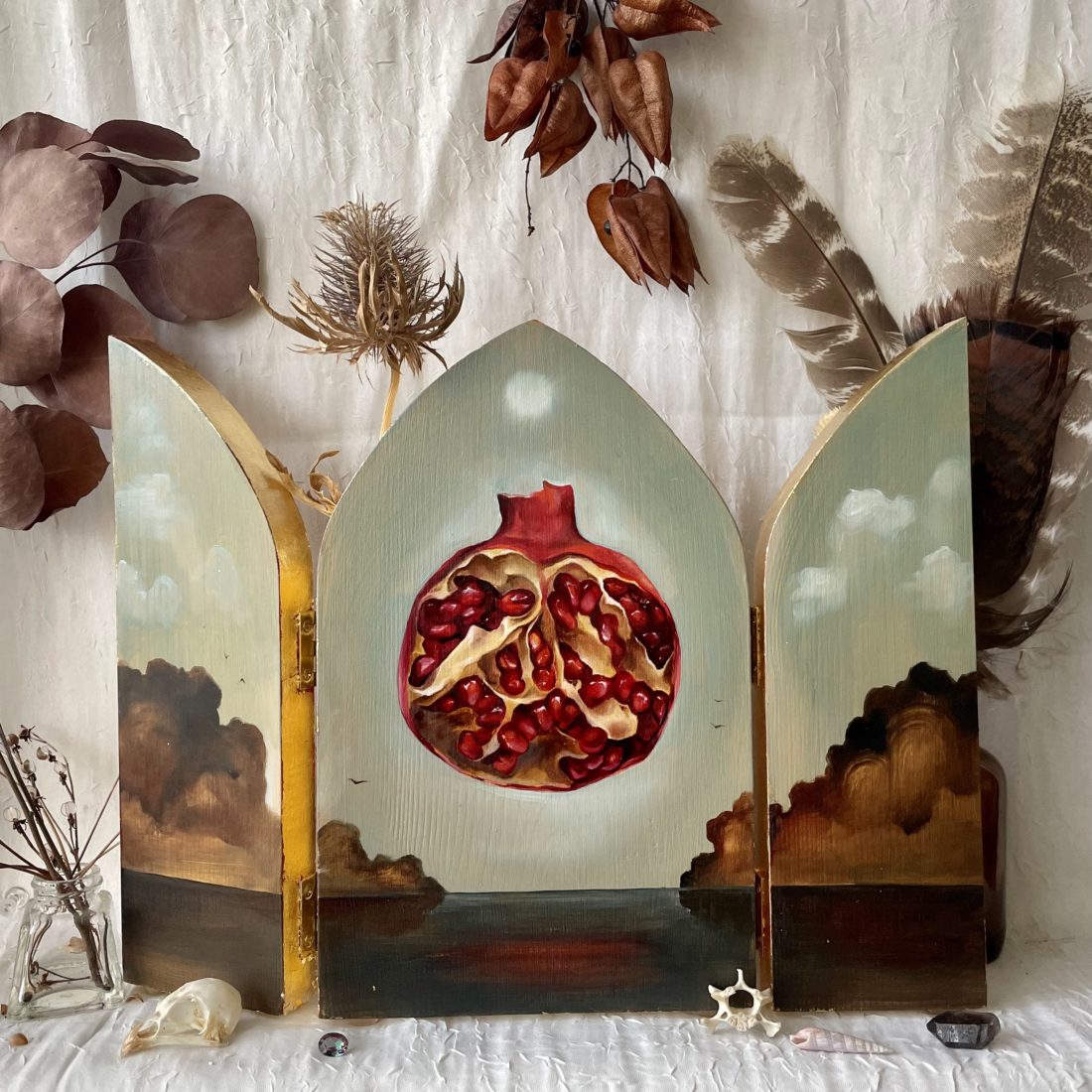
In photos, I love how you present your work with natural artifacts around them. Do you do this intentionally in your studio when you place a finished work?
I do! My whole house and studio are the same way; there are little collections and treasures everywhere—smooth rocks, sticks, and seed pods I find on walks. Once these paintings leave my studio, I hope they can enter people’s homes and collections in the same way. Especially the triptychs. I don’t want the work to just be a static thing that gets put on the wall and fades into the background. I want them to stay alive!
What inspired the transparent effects in your painting?
I’ve always loved painting transparency; when I was young, I loved the challenge of drawing clear plastic or painting bubbles, trying to capture something ephemeral and always shifting with the light. I think this newer body of work has a lot of the same motivations as the older, more realist pieces, but it has a more metaphorical purpose. It’s about the process of juggling multiple realities, looking toward an uncertain future, trying to navigate life and decisions when nothing feels certain. Even the patterns of the seasons are changing. The path that was laid out for our generation when we were growing up, the things we were told about what our futures would be, have changed dramatically. We’re having to figure out how to navigate a completely new world. The things that were once concrete have become harder to grasp and rely on.
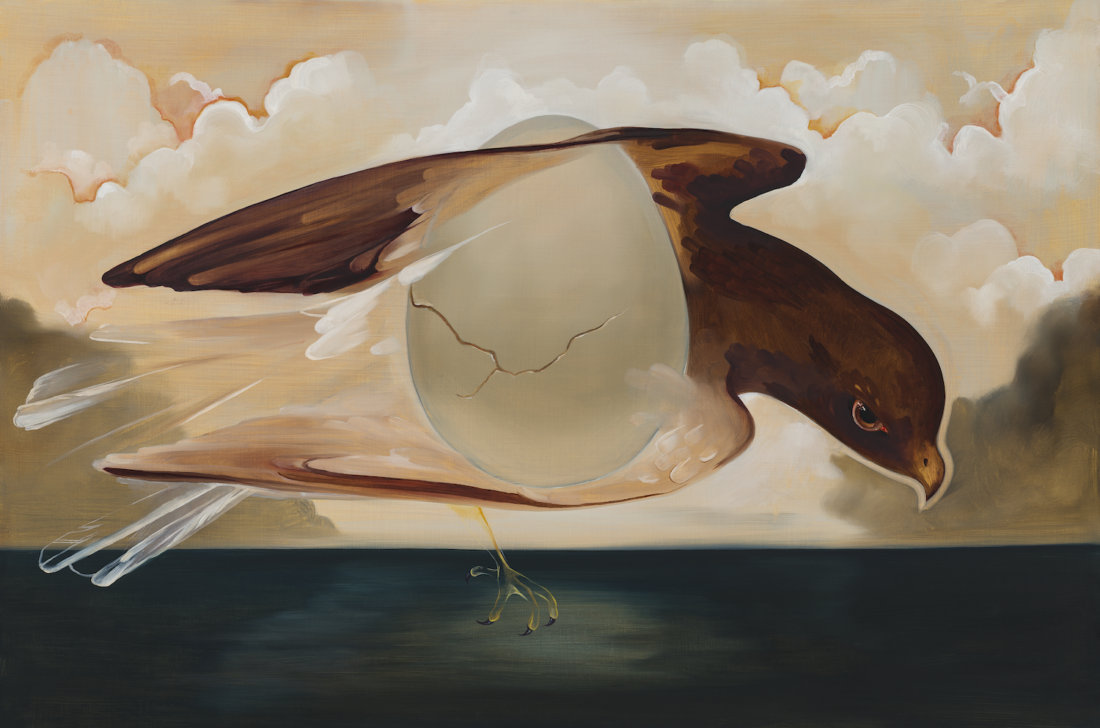
What do you hope viewers can learn from Force of Nature?
I hope that it can help people see the magic and the beauty in the natural world around them. Take time to appreciate the structure of a leaf, how every vein serves a role in keeping the tree alive. Take time to appreciate even the parts of nature that repel us—the insects and worms that keep our soil healthy, the weeds that pop up in the cracks around our homes.
I’ve been thinking a lot about storytelling and sacred rituals, these innate human practices so often tied to harvests and cycles of the seasons. In the past century or so, we’ve moved away from these things for a more materialistic, individualistic society. What does it look like to reclaim practices that we haven’t used for a generation or more? How can we take what we’ve learned and hold onto the elements that are helpful and move away from that which doesn’t serve us?
Each new generation adjusts to the world it’s born into, and that goes for nature too. The mockingbird that mimics cell phones and car alarms is responding to its world. It might not know anything different. I’ve now been trying to look more toward the future, because there will be a future one way or another. As humans we have powerful imaginations, and it’s our responsibility to shape a future that’s better for our children and the children of the mockingbirds.
